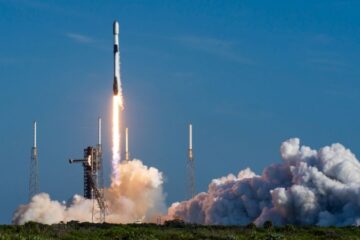Hurricane Milton could lead NASA’s Europa Clipper spacecraft to launch later this month than planned, but mission managers are eager for the robotic explorer to set out on its mission to one of Jupiter’s most intriguing worlds.
One of Jupiter’s major moons, Europa, has long captivated scientists with its unusually smooth surface ever since the Galileo Jupiter mission took its first up-close photos of it in the 1990s.
According to Amanda Hendrix of the Planetary Science Institute, Europa Clipper will circle Jupiter and do 49 close passes over Europa, where scientists believe an ocean of water flows beneath an icy surface.
“And those 49 flybys will help us put together all the pieces of the puzzle with all the different datasets to assess Europa’s habitability,” she explained.
Finding life on Europa is not the main goal this time, according to Hendrix.
“Maybe we’ll go back and search for life with a later mission.”
There are very few impact craters on Europa. However, Jupiter’s strong radiation fields and enormous tidal force have an impact on it.
Europa Clipper will use a broad, elliptical orbit that will periodically bring it alongside Europa for brief periods of observation in order to avoid the worst of Jupiter’s radiation. A group from Arizona State University created one of the instruments on board.
When the NASA spacecraft reaches Jupiter in 2030, it won’t be by itself. The JUICE probe of the European Science Agency will already be in the Jovian system, measuring Europa and the two other ice moons, Ganymede and Castillo.


